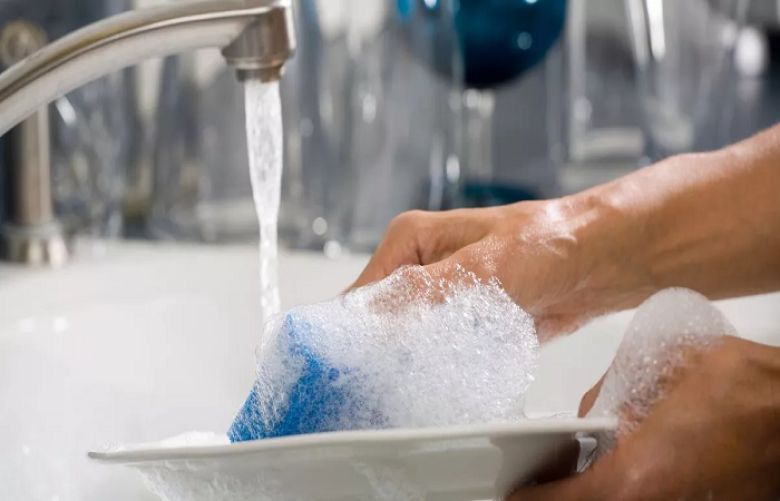A doctor has issued a stark warning against a common kitchen item saying that it could lead to a 'very severe infection'.
Dishcloths, often neglected and left damp on the sink, are seldom washed as frequently as other household items. With temperatures rising, kitchens become hotspots for bacteria proliferation, Dr Gareth Nye warns. Dr Gareth Nye, programme lead for medical science at the University of Chester, has advised against using dishcloths unless they are thoroughly washed after each use and replaced every few months to minimise bacterial contamination.
In collaboration with Magnet Trade, Dr Nye explored the extent of bacterial presence on dishcloths and shared best practices for their cleaning and storage. Dr Nye revealed startling figures: "90 per cent of UK dishcloths were considered heavily contaminated with bacteria compared, with 20 per cent of toilet flush handles. The toilet fairs better than other kitchen areas such as the kitchen tap and worktop. Again, according to recent studies, around 70 per cent of UK dishcloths are infected with over one billion bacteria per 100sqcm area - or around half a billion for your average sized dish cloth."
He also listed seven harmful bacteria commonly found on dishcloths, including E coli, which can cause a range of symptoms:
E coli - diarrhoea, fever, abdominal cramps, nausea and vomiting
Pseudomonas aeruginosa - can lead to respiratory failure, shock, and death
Salmonella - diarrhoea, fever, and stomach cramps
Staphylococcus aureus – if allowed to enter the bloodstream can cause bloodstream infections, pneumonia, or bone and joint infections
Enterobacter - urinary tract infections, respiratory infections
Klebsiella - urinary tract infections, respiratory infections
Bacillus subtilis – vomiting and diarrhoea
The expert warned to Bristol Live: "All bacteria can cause very severe infections in patients who are very young or old, or have underlying health conditions which make them more prone to infections. Bacteria will grow at different speeds depending on how damp the cloth is, how it's left and what it comes into contact with during its use.
"Recommendations are to not use them, but if you do, you should be washing thoroughly after each use and rinse with an anti-bacterial detergent every two days to kill harbouring germs. You should also change your dishcloth every few months. Ideally you should switch to anti-bacterial wipes to clean some surfaces, particularly after the preparation of raw meat or poultry which are known producers of harmful bacteria."
Tips on how to store your dishcloth to minimise bacterial growth
Dr Nye has issued a stark warning about kitchen hygiene, saying: "A moist dishcloth left in a warm kitchen provides an ideal environment for bacteria to multiply. This is particularly likely if food traces are present, too. They should be kept dry, away from potential sources of bacteria and laid as flat as possible. Bacteria grew and multiplied in all types of cloths that were crumpled, but levels of bacteria were reduced by 1,000 times if the dishcloths were hung to dry for 24 hours at room temperature."
How to wash dishcloths to remove bacteria
Wash dishcloths on a hot cycle of 90°C
Dr Nye said: “Ideally, to ensure all bacteria is removed you should wash dishcloths in a washing machine on a suitably high temperature, such as a hot cycle of 90C. Be sure to check the fibre content of your cloths before washing, as synthetic varieties won’t withstand high temperatures - so if you haven’t already, invest in natural materials that can withstand a hot wash."
Make sure all food and dirt is removed
Dr Nye said: “If you wash and disinfect cloths by hand, make sure all the food and dirt has been removed by washing in hot soapy water before you disinfect them. After washing, you can disinfect by using boiling water or a disinfectant, following the manufacturer’s instructions.”

